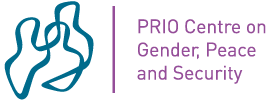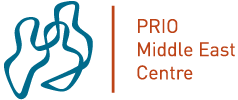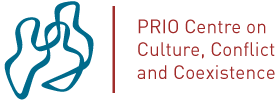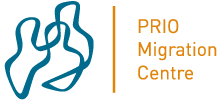Adding a new piece to the puzzle: How the UN Peace and Security Data Hub can support peace and conflict research
Posted Friday, 18 Jul 2025 by Angelica Lindqvist-McGowan, Simon Polichinel von der Maase & Alexa Timlick

By offering structured, publicly accessible and regularly updated data on various aspects of UN peace support, the UN Peace and Security Data Hub opens new avenues for empirical research and policy-relevant analysis – not least for forecasting platforms like VIEWS.
Forecasting the onset, spread and impact of political violence is a central challenge for both researchers and policymakers. At the core of this challenge lies a fundamental need: access to high-quality, transparent and timely data. While significant progress has been made in conflict monitoring – thanks to established sources such as the Uppsala Conflict Data Program (UCDP) and the Armed Conflict Location & Event Dataset (ACLED) – a persistent gap has remained in our understanding of responses to violence, particularly in terms of peace operations and policy interventions.
The new UN Peace and Security Data Hub marks an important step toward closing that gap. By offering structured, publicly accessible and regularly updated data on various aspects of UN peace support, the Hub opens new avenues for empirical research and policy-relevant analysis – not least for forecasting platforms like VIEWS, which become better equipped to predict how conflict trajectories might shift.
A new window into UN peace support
Understanding the dynamics of political violence – and the effectiveness of efforts to prevent or mitigate it – requires more than good intentions. It demands a diverse toolkit: rigorous methods, high-resolution data and deep domain expertise.
At VIEWS, we focus on forecasting organized armed conflict and its consequences for affected communities worldwide. Our core models rely heavily on foundational sources like UCDP and ACLED, which provide detailed, event-based data on conflict patterns, actors and trends. But as our predictive tools become more sophisticated – and increasingly inform early and anticipatory action – the data ecosystems that seek to support them must evolve as well. To assess not only where and when violence is likely to occur, but also how external interventions might alter those trajectories, we need access to operational data that complements traditional conflict datasets. This information is crucial for ensuring that our forecasts remain relevant and valid in real-world policy contexts – particularly when they are used to guide preventive or mitigatory efforts.
The UN Peace and Security Data Hub is one such resource that we are particularly excited about. It provides structured, scalable and open access to a wide array of data on UN peace operations. This marks a meaningful step forward, addressing long-standing calls from the research community to make better use of the UN’s internal data – much of which has previously been fragmented and difficult to access. The Data Hub holds strong potential to support empirical research and policy-relevant analysis on peacekeeping composition and outcomes. For instance, the hub was recently used in a working paper exploring the diversity among peacekeepers (Mutangadura-Yeswa et al. 2024), illustrating its value for the community.
What the Hub offers
The UN Peace and Security Data Hub provides new insights across several dimensions of UN peace support and political missions, including:
- Past and present UN peacekeeping operations (1948–)
- Deployed personnel in Peacekeeping Operations (PKOs, 2010–) and Special Political Missions (SPMs, 2018–2022)
- Monthly mission air assets (2019–)
- Fatalities in PKOs and SPMs (1948–)
- Performance indicators for field missions (2014–)
These datasets offer researchers and policymakers a clearer picture of when and where the UN is engaged, how its missions are staffed and equipped, and the costs and consequences of peace operations. When combined with conflict event data and integrated into forecasting models like VIEWS, these operational insights help build a more complete picture of the conflict-peace continuum.
What’s to be done – and did it work?
Integrating peace support data with real-time conflict monitoring and forward-looking forecasts allows us to tackle two of the field’s most pressing questions:
- What’s to be done? Where and when should peace support be deployed – and in what form?
- Did it work? Can we observe measurable impacts, such as reductions in violence or improvements in local security, following specific interventions?
The ability to track the scale and nature of UN engagement alongside conflict dynamics adds vital context for assessing both policy effectiveness and long-term trends. This, in turn, supports the development of more adaptive and accountable peace strategies.
A complement, not a replacement
It is important to emphasize that the Peace and Security Data Hub is not a substitute for core conflict datasets such as UCDP or ACLED. These remain indispensable for tracking patterns of violence and modeling risk – as do many other trusted datasets commonly used in our field. Rather, the Data Hub provides complementary data – capturing the operational footprint of peacekeeping and political missions, deployment levels, civilian components and financial resources.
This kind of contextual data helps close key knowledge gaps in our understanding of peace support effectiveness and the cost of (non-)intervention, and supports the creation of more realistic and nuanced models that account for policy responses. It also improves our ability to interpret apparent 'false alarms'. For instance, when a forecast anticipates violence that does not materialize, incorporating data on preventive interventions can help determine whether the forecast was indeed wrong – or whether the intervention worked.
Strengthening the link between data and action
In the field of peace and conflict, data availability is not merely a technical concern – it is a strategic necessity. The UN Peace and Security Data Hub represents a meaningful advance in the infrastructure for collecting, organizing and sharing peace operations data. It strengthens the foundation for a more integrated and evidence-based approach to conflict prevention and peacebuilding – one that we strongly encourage other UN agencies and international organizations to emulate.
By linking operational data on peace support with real-time forecasts and post-conflict assessments, forecasting platforms like VIEWS can deliver more timely, targeted and effective early-warning tools. This, in turn, contributes to better-informed planning, more adaptive responses, and ultimately, greater accountability in the use of international peace support resources.
As members of the global peace research community, and conflict forecasters, we look forward to working with partners across the UN system and beyond to fully explore and realize the potential of the Data Hub – and to sharpen the tools needed to move from early warning to early action.
- Angelica Lindqvist-McGowan is Research administrator at Department of Peace and Conflict Research at Uppsala University; Simon Polichinel von der Maase is Senior Researcher at PRIO; and Alexa Timlick is Research Assistant at PRIO.
- This text is also published by VIEWS.








